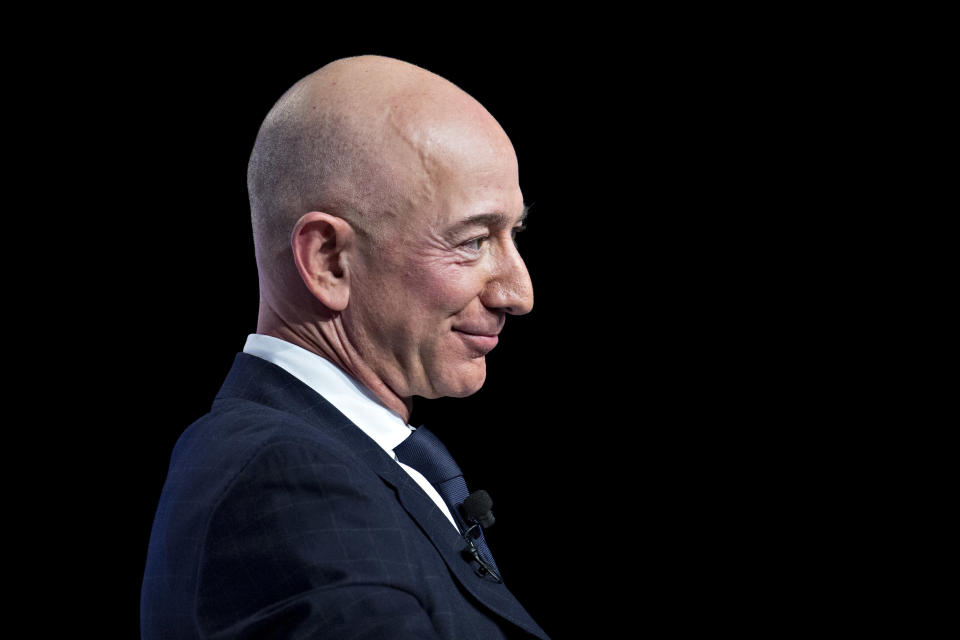Amazon is using its winning Marketplace strategy for its 'Our Brands' section

In 2000, Amazon made a very large bet: It invited third-party sellers to compete with Amazon itself on its own website, next to its own products. At that moment, Amazon.com metamorphosed from a website to a platform, like eBay.
“Well-meaning people internally and externally worried it would cannibalize Amazon’s retail business, and—as is often the case with consumer-focused innovations—there was no way to prove in advance that it would work,” the company’s CEO Jeff Bezos recalled later in a letter to shareholders.
The bet, of course, paid off enormously. Bezos had reasoned that if the service was so good, with the best prices and the best selection, the growth would be worth it. Third-party sales began at 6% of total units sold in 2000, surpassed 25% by 2005, and ticked over the 50% mark in 2017, aided by strategies like Fulfillment by Amazon, which allow third-party sellers to keep inventory at Amazon warehouses for them to handle everything.
“Pay us 45 cents per month per cubic foot of fulfillment center space, and you can stow your products in our network,” Bezos explained in 2001. “You make web services calls to alert us to expect inventory to arrive, to tell us to pick and pack one or more items, and to tell us where to ship those items. You never have to talk to us. It’s differentiated, can be large, and passes our returns bar.”
Whether it’s a “network” or a “platform,” Amazon’s pivot to allow — and aid — third-party sellers has been a key source of growth, enabling bigger scale without as much skin in the game. To quote the British gangster in the 2004 film “Layer Cake,” “Always remember, young man, the art of good business is being a good middleman.”
This lesson has not been lost on Amazon, which has iterated on it yet again with its “Our Brands.”
Amazon brands go full ‘Marketplace’
Amazon in-house brands like Amazon Basics, Pinzon, Rivet, Buttoned Down, 28 Palms, Solimo and many more have been on the rise over the past few years. As Amazon gets smarter about what its customers like and want, it’s been able to step in and provide those services. For the most part customers seem to like it — people assume the products are vetted through the “obsessed with customer” lens — though the amount of less-than-fully-objective reviews from Amazon’s Vine reviewers program raises some questions.
In a recent piece for the New York Times, John Herrman pointed out that “everything on Amazon is Amazon.” Herrman’s observation isn’t that Amazon is simply propping up its own in-house brands – Amazon is also getting other companies to be monogamous with Amazon and call them “our brands.”
For example, Buttoned Up is a Prime-member exclusive shirt brand that Amazon owns. But as Herrman pointed out, the apparel brands Austin Mill and Beautiful Nomad are also technically “our brands,” though not created by Amazon. Today, anyone or any company can become an Amazon brand.
For years, Amazon has sold many versions of products that look similar to name-brand versions — possibly made in the same factory in China. Just think of all the GoPro knockoffs. In many cases, when a person simply wants a waterproof 4K camera, that approach works quite well since they often cost a fraction of the price of a real thing.
Having so much competition from these products sold by third-party sellers on its marketplace has meant that prices get pushed down to wildly low levels as sellers fight for top spots on search pages. With the low prices, customers buy more and more, and Amazon takes its cut happily.
With its “our brands” expansion, Amazon doesn’t just allow brands to become Amazon-exclusive to get better discoverability on the platform — it actively helps them do it by supplying design and branding support, as Herrman reported. If allowing brands to become Amazon brands is like Amazon’s marketplace, the help it provides is like Fulfillment by Amazon. The company is running its playbook.
Unlike Netflix, which has treated its own content and licensed content as zero-sum and gone all in on its own stuff, Amazon’s attitude seems to be, the more products the better. But like Netflix, exclusivity is key — and the reason that people stay customers.
If Amazon is converting tons of commoditized products (like clothing, simple electronics, and accessories, probably made in the same factories but with a different label slapped on by a distributor or importer) into “our brands,” by inducing them with support they are effectively taking them out of the competition pool. Many sellers use eBay, Walmart, Newegg, and other platforms to sell their stuff. But if they agree to be Amazon-exclusive, Amazon reaps the benefits. If you want the product, there’s only one option.
–
Ethan Wolff-Mann is a writer at Yahoo Finance focusing on consumer issues, retail, personal finance, and more. Follow him on Twitter @ewolffmann.